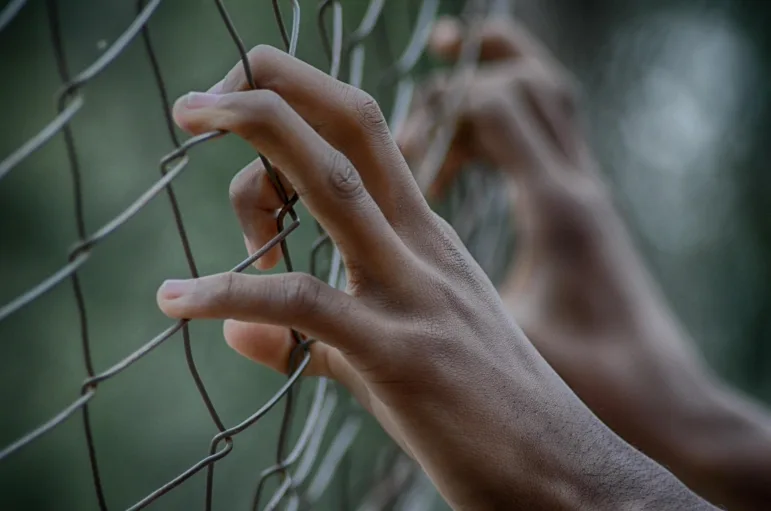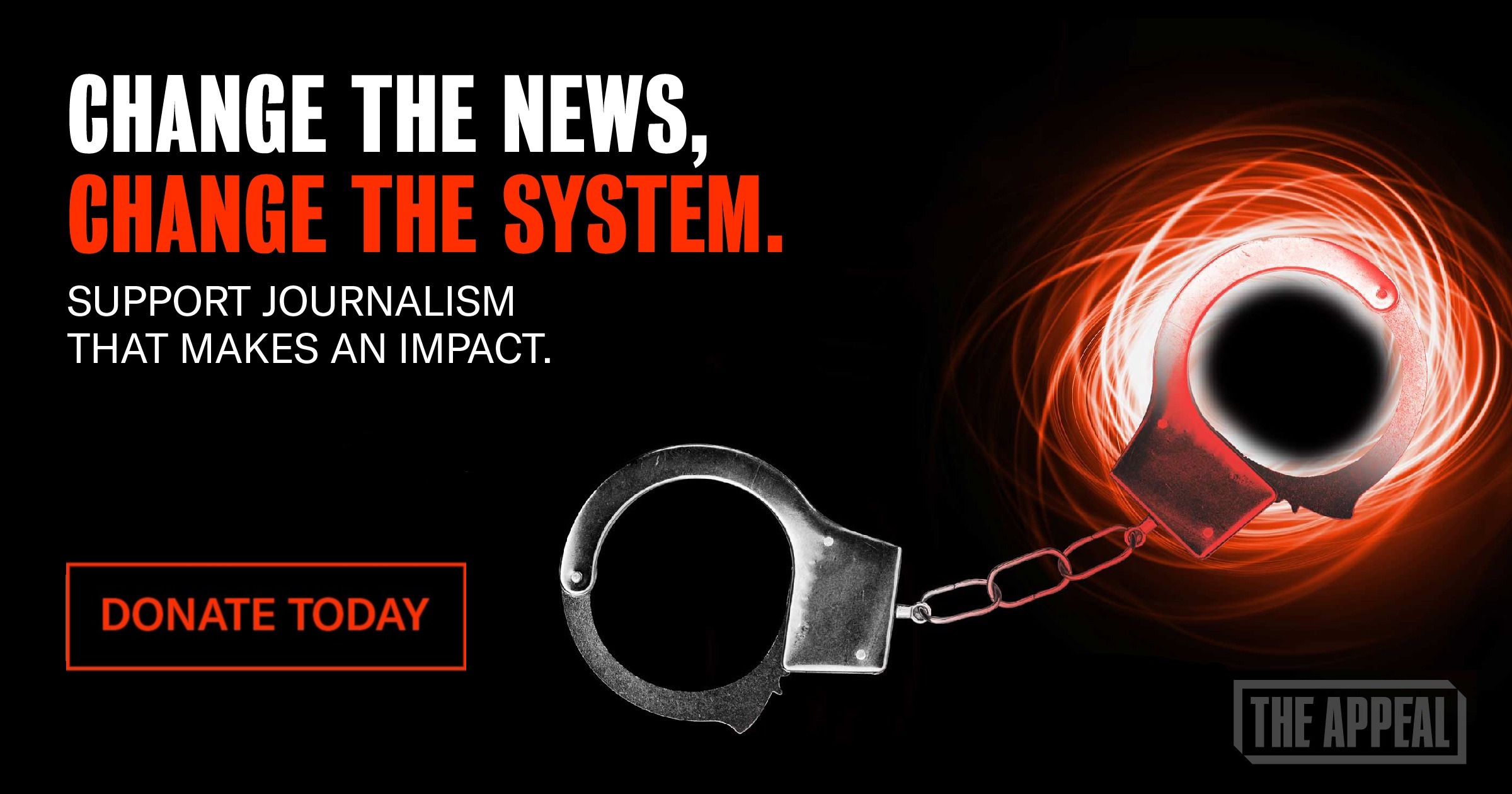Imprisoned People Can Do More than ‘Scare’ Kids ‘Straight’
“Scared straight” programs don’t work. But that doesn’t mean incarcerated people shouldn’t mentor at-risk kids.

In 1978, the Oscar-winning documentary “Scared Straight!” popularized the idea that the best way to prevent young people from incarceration is to scare them. The film focuses on a group of “juvenile delinquents” who get screamed at by hardened prisoners about rape and violence inside adult prisons. The documentary spawned sequels and spinoffs. It remains a cultural touchstone—during Saturday Night Live’s recent 50th Anniversary celebration, stars including Kenan Thompson, Will Ferrell, and Eddie Murphy parodied the concept.
But, in real life, there is no evidence that this approach actually reduces crime. If anything, the program has the opposite effect: At least three different academic studies between 2003 and 2013 warned that people who go through Scared Straight programs after an arrest are more likely to return to prison. In 2011, activists petitioned A&E to cancel its “Beyond Scared Straight” series, accusing the program of violating a federal law banning kids from entering adult jails.
There are far better ways to deter at-risk youth from crime. In recent years, community leaders in Washington state have worked with incarcerated individuals who understand how social rejection, poverty, and unaddressed trauma set up so many young people to fail.
“Many students have been traumatized by violence and criminal behavior, which is a reality in communities with very few resources or support groups,” said Shikita Trahan, a high school special education teacher in Seattle who has organized violence-prevention workshops with both perpetrators and victims of crime.
Trahan’s workshops offered a space for students to hear from community members with lived experience that resembled their own. One person spoke about the trauma of being shot multiple times. Another discussed the impact of spending nearly 30 years of his life behind bars because of violence. One of the authors of this piece, who is incarcerated, spoke with hundreds of students about the causes and consequences of crime.
Over the past two years, students at Trahan’s school have experienced two shootings, including one that took the life of a student. Although the school made counselors available, “most students didn’t feel comfortable speaking to them about their personal struggles, because they don’t know them and can’t relate to them,” said Durron Kirvin, a friend of the student who died.
Kirvin said that, even over the phone, he could connect with these types of stories.
“When a person is living in the consequences of their choices and can relate to what us young people are going through, it touches us differently,” he said.
Anthony Curtis, executive director of the Black Equality Coalition, has connected incarcerated individuals with students at many schools across Washington.
“There are people in prison who understand the realities that young people in marginalized communities are confronted with, issues like social acceptance, parents on drugs, neighborhood violence, and the feelings of having no worth,” Curtis said. “Between their stories and lived experience, incarcerated individuals are able to help young people identify those adversities, while offering them tools and insights on how to navigate those adversities without harming themselves or others.”
Curtis acknowledged that some people, mostly those who can’t identify with the struggle of our young people, frown on exposing students to convicted criminals. But many parents and other community organizations strongly support it, knowing that their children are learning to make better choices.
“Young people appear to be more open, honest, and receptive, because they don’t feel judged by those behind bars,” he said.
Community leaders like Trahan and Curtis understand that some incarcerated individuals can help guide young people through the same challenging circumstances they’ve experienced. Carlos Bernardez is a great example.
Bernardez, who is currently serving a 35-year sentence for murder at the Washington Corrections Center, spoke with teenagers at a recent community event at the Urban Grace Church in Tacoma, Washington.
Over the phone from prison, Bernardez explained to a room full of teenagers how his unaddressed trauma led to his criminal behavior and how the ripple effects of his crime hurt his family and community in unfixable ways.
“I know what it’s like trying to fit in as a kid,” Bernardez explained. “I also know what it’s like growing up around gangs, drugs, and violence. And when you are left to process the thoughts and emotions that are generated from these environments, you tend to make unwise, and sometimes harmful decisions.”
Bernardez deeply believes in these programs and invests in participating in them.
“If someone had stopped to do that for me, I probably wouldn’t have ended up in prison,” he said. “I know if we want to reshape our communities, it will involve all of us—including those who’ve previously caused harm and are now forced to live behind these walls and fences.”

ICYMI—From The Appeal
According to a wrongful death lawsuit, staff at Texas’s Angelina County Jail stood by as 33-year-old Glenn Smallwood vomited and died in front of them.
The U.S. Department of Justice removed questions about gender identity from at least four critical crime data surveys.
In The News
The U.S. Drug Enforcement Agency canceled its body-worn camera program for agents after only four years. [Mario Ariza / ProPublica]
ICE is increasingly holding immigrants in U.S. federal prisons, where they’re subject to abuse and neglect. [Sam Levin / The Guardian]
University of California-Los Angeles riot police shut down a screening of a pro-Palestine documentary on campus and arrested at least three people. [Alexandra Crosnoe and Micah Hoffman / The Daily Bruin]
In at least two separate incidents, the LAPD says its officers did not bother to investigate assaults that had been reported to 911, leading to two undiscovered murders. [Richard Winton and Libor Jany / The Los Angeles Times]
An Arizona family created an AI video of its deceased loved one speaking about his own murder—and convinced a judge to sentence a man to more time in prison. [Jordan Bontke and Ashley Loose / ABC15 Phoenix]
